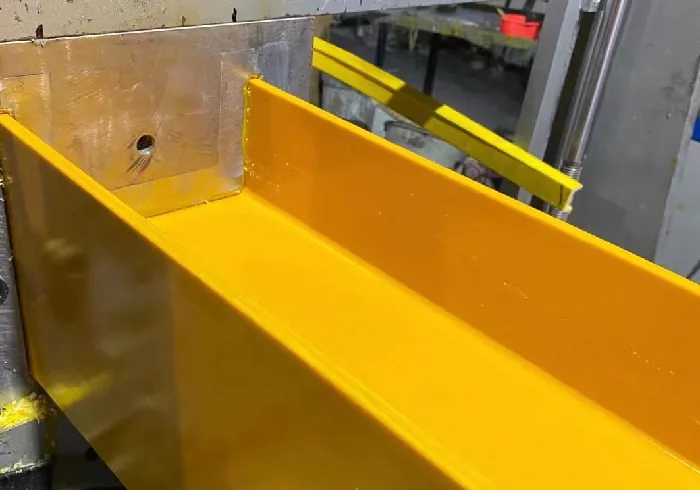loading...
- No. 9, Xingyuan South Street, Dongwaihuan Road, Zaoqiang County, Hengshui, Hebei, China
- admin@zjcomposites.com
- +86 15097380338
- Welcome to visit our website!
grp water tank
Understanding GRP Water Tanks A Sustainable Solution
Water is one of the most fundamental resources for human survival, agriculture, and industry. Ensuring a clean and reliable water supply is crucial for communities worldwide. One innovative solution that has gained popularity in recent years is the use of Glass Reinforced Plastic (GRP) water tanks. These tanks offer numerous advantages that make them an ideal choice for water storage in various applications.
What are GRP Water Tanks?
GRP, or Glass Reinforced Plastic, is a composite material made from a polymer matrix reinforced with glass fibers. This combination results in a lightweight yet highly durable material that can withstand harsh environmental conditions. GRP water tanks are made from this composite, making them an excellent option for storing potable water, wastewater, and rainwater.
Advantages of GRP Water Tanks
1. Corrosion Resistance One of the primary benefits of GRP water tanks is their resistance to corrosion. Unlike traditional materials like steel or concrete, GRP does not rust or corrode over time, making it a more sustainable choice. This property ensures a longer lifespan for the tank, reducing the need for frequent replacements.
2. Lightweight GRP tanks are significantly lighter than their concrete counterparts. This lightweight nature makes them easier to transport and install, reducing logistical costs and labor time. Whether used in urban settings or remote areas, the ease of installation is a considerable advantage.
3. Flexibility in Design GRP water tanks come in various shapes and sizes, allowing for customization based on specific needs. They can be manufactured in both above-ground and underground designs, accommodating space and aesthetic requirements. This adaptability makes GRP tanks suitable for residential, commercial, and industrial applications.
grp water tank

4. Insulation Properties GRP materials have excellent thermal insulation properties. This feature helps maintain the temperature of stored water, whether it’s for irrigation or drinking. By minimizing temperature fluctuations, GRP tanks can also reduce the risk of algae growth in stored water.
5. Cost-Effectiveness Although the initial investment in GRP water tanks might be higher than traditional options, their long-term durability and reduced maintenance needs result in significant cost savings. Additionally, their resistance to corrosion means less time and money spent on repairs or replacements.
6. Environmental Impact The production of GRP water tanks generates less waste compared to traditional concrete tank construction. Moreover, their longevity and low maintenance requirements further reduce environmental impact over time. Many manufacturers are also adopting eco-friendly practices in the production process, enhancing the sustainability of GRP tanks.
Applications
GRP water tanks are versatile and are used in various settings. They can be found in municipal water supply systems, agricultural irrigation, industrial processes, and even residential homes. Their ability to store both potable and non-potable water makes them an essential component in modern water management strategies.
Conclusion
In conclusion, GRP water tanks represent a forward-thinking solution to water storage challenges. Their durability, lightweight nature, and environmental benefits make them a preferable choice over traditional materials. As we continue to face water scarcity and quality issues globally, the adoption of innovative solutions like GRP tanks will be crucial in ensuring a sustainable water supply for future generations. Investing in GRP water tanks not only addresses current needs but also promotes a greener and more sustainable future.
-
The Rise of FRP Profiles: Strong, Lightweight, and Built to LastNewsJul.14,2025
-
SMC Panel Tanks: A Modern Water Storage Solution for All EnvironmentsNewsJul.14,2025
-
GRP Grating: A Modern Solution for Safe and Durable Access SystemsNewsJul.14,2025
-
Galvanized Steel Water Tanks: Durable, Reliable, and Ready for UseNewsJul.14,2025
-
FRP Mini Mesh Grating: The Safer, Smarter Flooring SolutionNewsJul.14,2025
-
Exploring FRP Vessels: Durable Solutions for Modern Fluid HandlingNewsJul.14,2025
-
GRP Structures: The Future of Lightweight, High-Performance EngineeringNewsJun.20,2025
